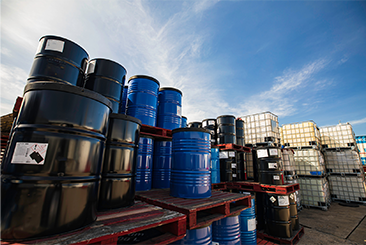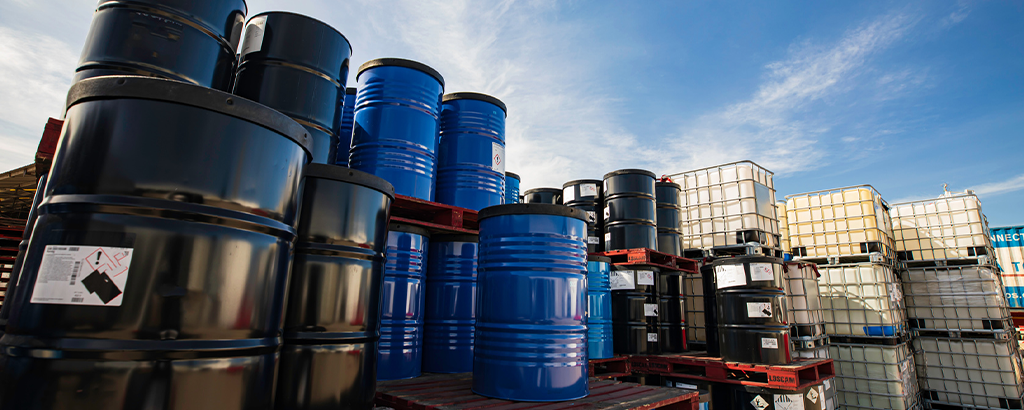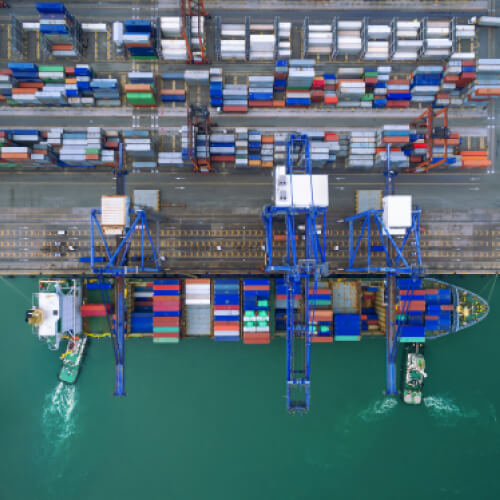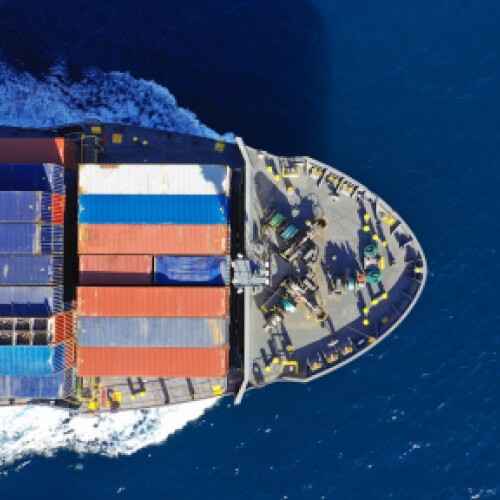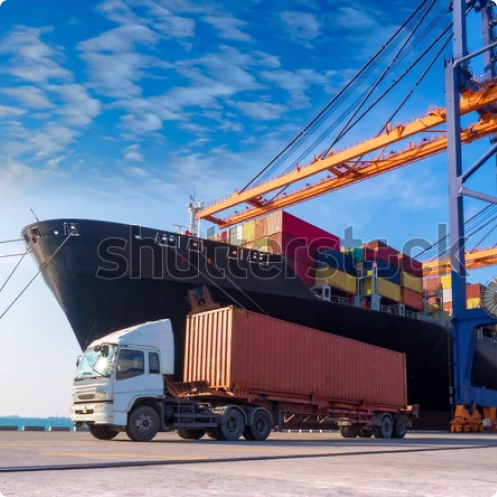In the complex world of logistics and international shipping, handling dangerous goods represents one of the most delicate challenges. If not managed with the right procedures, these substances, due to their intrinsic properties, can pose a significant risk to health, safety, and the environment.
In this article by Savino Del Bene, the aim is to explore in detail what is meant by dangerous goods, how they are classified internationally, and which regulations govern their transport.
What are dangerous goods
First of all, let’s try to give a definition of “dangerous goods”. This term refers to all those substances or materials that, due to their physical-chemical properties or their characteristics, can present risks during transport. These include toxic, radioactive, corrosive, explosive, and flammable materials. Dangerous goods, therefore, are prohibited for international transport unless certain safety conditions are met.
In this regard, the United Nations (UN) has established a universal system for the classification and transport of dangerous goods. This system forms the basis of most national and international regulations and details how such goods must be packed, marked, and labeled for safe shipping. To determine their degree of danger, each substance is tested and assigned a UN number, an appropriate shipping name, and sometimes a packaging group that represents a certain level of danger. All this information is mandatory and must be included in the documentation for the transport of dangerous goods.
Classification of dangerous goods
Let’s go into more detail about the classification of dangerous goods. This is based on 9 classes (some of which also have subclasses), each identified by specific criteria and regulations. Below is the analysis of the individual classes.
Class 1: explosives
Class 1 of dangerous goods relates to explosives. An explosive is defined as any reactive substance or article that contains a large amount of potential energy that can produce an explosion. Explosives are divided into six subclasses, based on the risk of explosion.
Class 2: gases
Class 2 of dangerous goods relates to gases. “Gas” can mean pure gas or a mixture of two or more gases. Materials in this class have three subclasses: flammable gases (which can cause fires), non-flammable compressed gases (which can cause asphyxiation), and toxic gasses (which can cause poisoning).
Class 3: flammable liquids
Class 3 of dangerous goods relates to flammable liquids. The regulations on dangerous goods define “flammable liquids” as a liquid or a mixture of liquids with a flash point not exceeding 60° C. These liquids emit a flammable vapor that, when mixed with air, can catch fire or explode.
Class 4: flammable solids
Class 4 of dangerous goods relates to flammable solids, i.e., substances that, despite being in solid state, present a fire risk during transport due to their physical-chemical properties. This class is further divided into three main subcategories:
- Class 4.1: flammable solids, self-reactive substances, and desensitized explosives;
- Class 4.2: substances liable to spontaneous combustion;
- Class 4.3: substances which, in contact with water, emit flammable gases.

Class 5: oxidizing substances and organic peroxides
Class 5 of dangerous goods relates to oxidizing substances (5.1) and organic peroxides (5.2). The oxidizing substances are chemical compounds that can release oxygen, increasing the risk and intensity of a fire. They are not necessarily flammable themselves but can contribute to fires, making other substances more easily combustible. The organic peroxides are extremely reactive and often unstable chemical compounds. They can decompose, even explosively, under the effect of heat, light, shock, or contamination, and are often also flammable.
Class 6: toxic substances and infectious substances
Class 6 of dangerous goods relates to toxic substances (6.1) and infectious substances (6.2). The toxic substances are those that can cause harm to health or even death if inhaled, ingested, or absorbed through the skin. The infectious substances contain pathogens (bacteria, viruses, parasites, fungi) that can cause diseases in humans or animals.
Class 7: radioactive materials
Class 7 of dangerous goods relates to radioactive materials, i.e., all those substances that emit ionizing radiation, a phenomenon that can pose significant risks to human health and the environment. Radiation can be of different types (alpha, beta, gamma, neutrons) and vary in terms of penetrating power and level of danger.
Class 8: corrosive substances
Class 8 of dangerous goods relates to corrosive substances, i.e., all those substances that, due to their chemical properties, can cause severe damage when they come into contact with living tissues or can deteriorate or destroy other materials, such as metals or plastics. Corrosive materials can be acids, bases, or other chemical compounds that react with different materials causing a corrosive effect.
Class 9: miscellaneous dangerous goods
Class 9 of dangerous goods relates to a variety of dangerous goods that do not fall into any of the other classes analyzed. This category is quite heterogeneous and covers materials and objects with varied risks: from hazardous waste to magnetized material, including lithium batteries.
Transportation regulations for dangerous goods
As anticipated, the regulation of dangerous goods in terms of transport represents a complex field. The regulations vary depending on the type of goods and the means of transport used. Let’s look at some of the most important ones:
- ADR (European Agreement concerning the International Carriage of Dangerous Goods by Road): which establishes the rules for land shipments;
- IMDG (International Maritime Code for Dangerous Goods): which establishes the rules for ocean shipments;
- IATA (International Air Transport Association): which establishes the rules for air shipments.
These regulations require specific requirements for packaging, labeling, handling, and transport of dangerous goods. Materials must be correctly classified according to hazard classes and detailed information provided on associated risks. Furthermore, personnel involved in the transport of dangerous goods must be adequately trained and informed about safety protocols and emergency procedures.
Conclusion
The handling of dangerous goods, therefore, requires special attention, and the same documentation is fundamental during transport: missing or non-compliant documents risk causing not only delays in shipping but potentially also serious accidents. For this reason, it is essential to be accompanied by expert forwarders in the field. For your international shipping services, you can rely on Savino Del Bene: we offer practical knowledge and trained personnel to best manage the shipments of dangerous goods related to your business.

